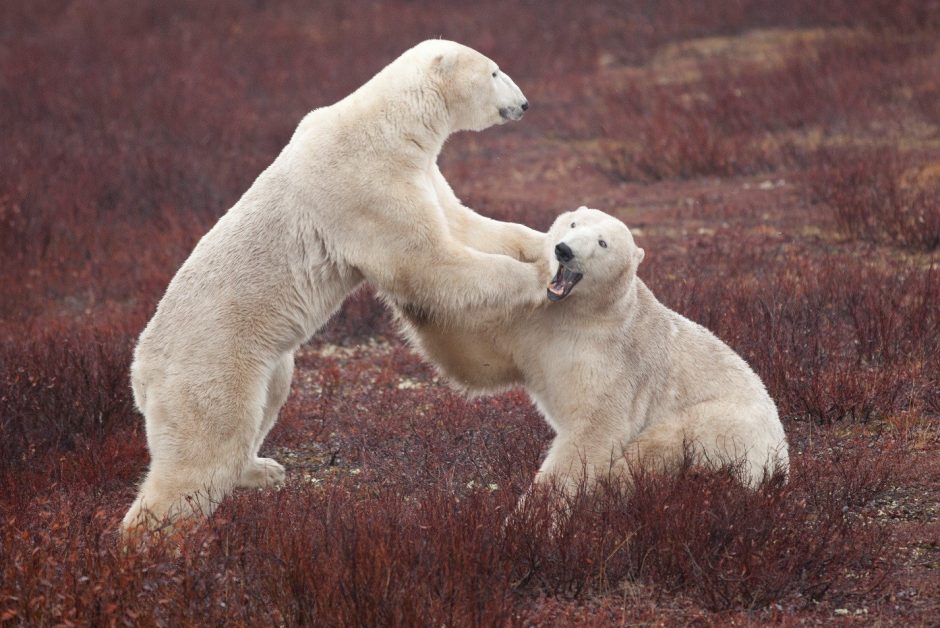
Getting this Shot – Polar Bears Sparring
This post goes quite well with the previous tutorial on freezing motion of fast moving animals. Here, while on a Polar Bear Photo trip, we got the wonderful opportunity to photograph two large males sparring. As you can see, these two male brutes are in full action-mode. While getting the motion in freeze frame is critical, there is a bit more going on here to fully get this shot.
The main ingredient to this shot, is knowing ahead of time what settings you’ll revert to once the action starts.
Shutter Speed
While you can often predict the moment two male bears will stand up and begin sparring with a few seconds notice, you should have an idea of what settings you want before the event occurs. Do you want to freeze the motion, or add a little blur to show that there is some action going on rather than a full freeze-frame? For freezing motion, you really need to go for 1/500 of second at very minimum, and realistically over 1/1000 is standard. But, it really all depends on the speed of the motion. This shot was taken at 1/640 and it worked quite well. However, if you wished to show a bit of blur in the swing of the arm, something like 1/80 would have been ideal (word of caution, though, anything that is moving fast will also be blurred, so if the bodies are moving, too, they’ll be blurred as well).
Aperture
Typically, when shooting at high shutter speeds, you won’t have the flexibility of choosing a big aperture number (wide depth of field). Light is often the limiting factor (check out our Exposure Section to learn more). However, this isn’t necessarily a bad thing, as a nice background blur, caused by a shallow depth of field, helps isolate the subjects amidst a relatively busy environment. This shot was taken at f/3.2.
White Balance
Lastly, when shooting in the arctic, white balance settings can be rather important. To me, I generally opt for warmer shots during early season (prior to snow) and colder shots during later season, once there is a thick layer of snow on the ground. To get a warmer shot, set your white balance on “cloudy” or “shady”, so that your camera injects more yellow into the picture. To get a cooler shot, set your white balance on “sunny” to inject more blue. However, as with most things when it comes to photography, all rules are meant to be broken. Try things out and experiment a bit for your personal preference.
Photographing polar bears is the epitome of a big wildlife safari. As the 2016 Polar Bear season approaches, we’ll no doubt be adding more articles to help you make the most of your adventure with the King of the North. Let us know what your favorite topics would be in the comments below!
Go forth and give it a shot,
Court
Leave a reply